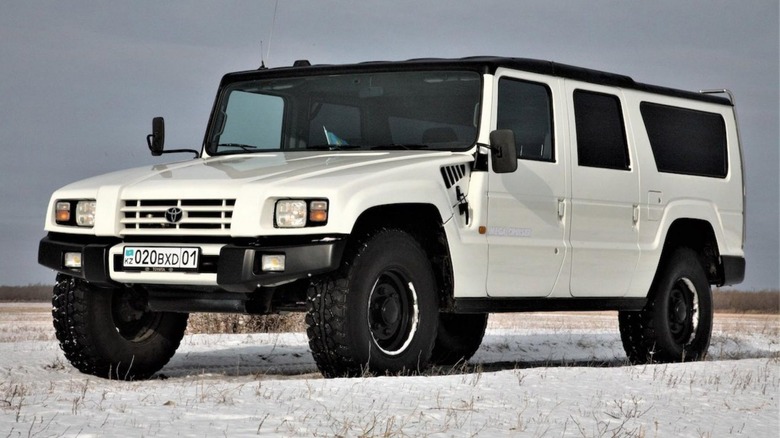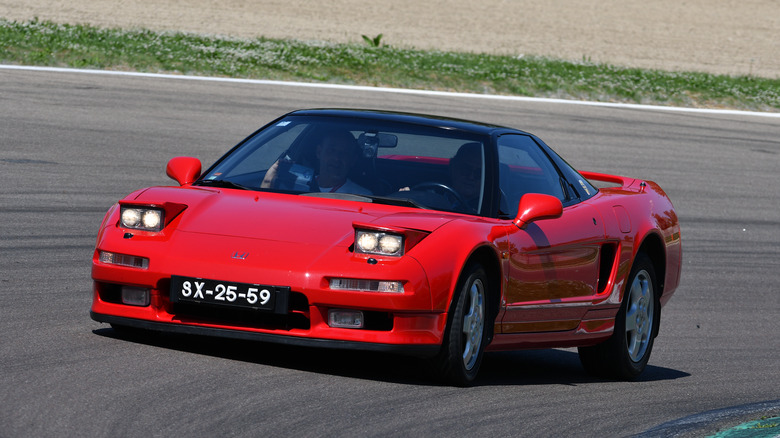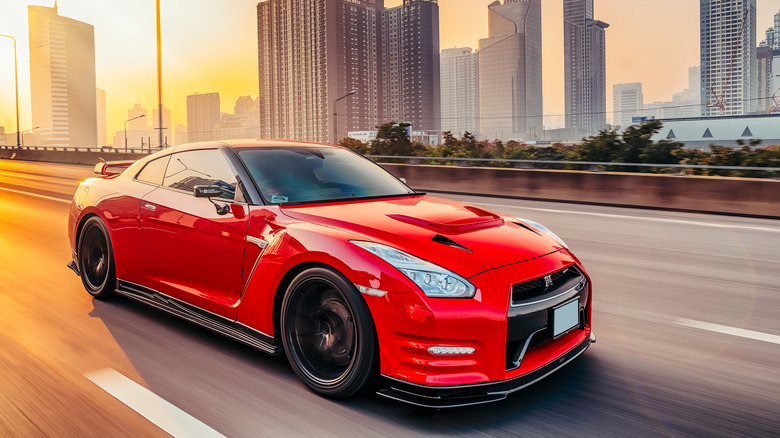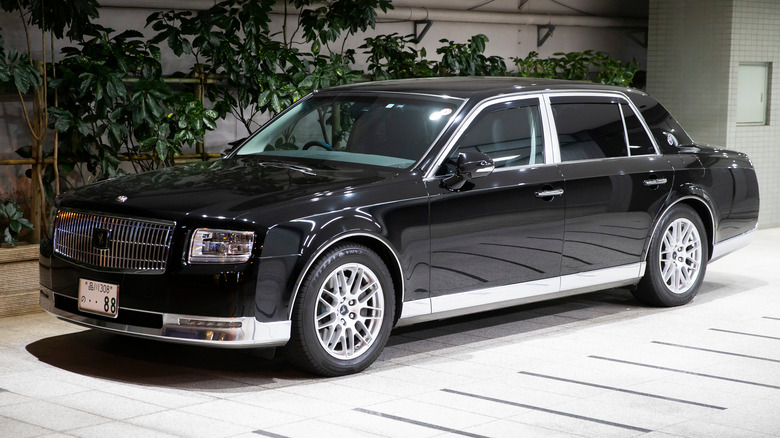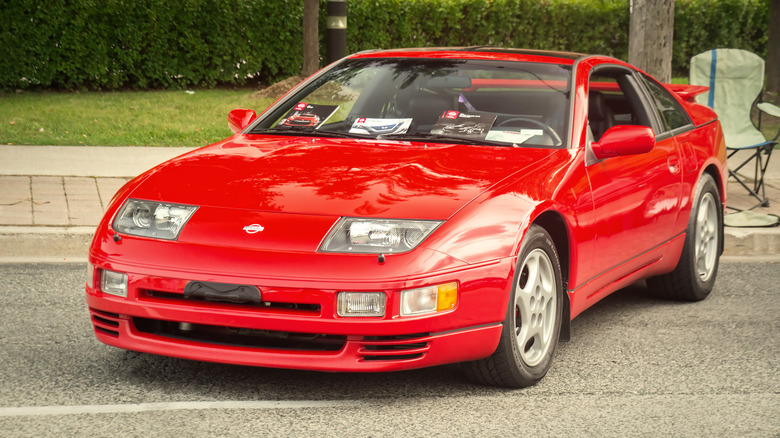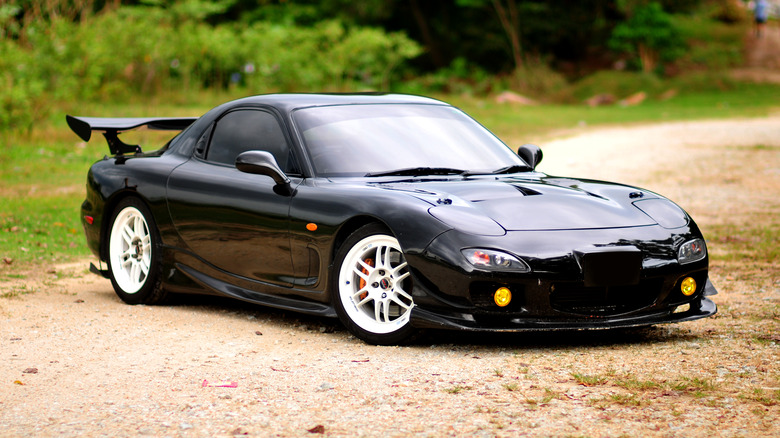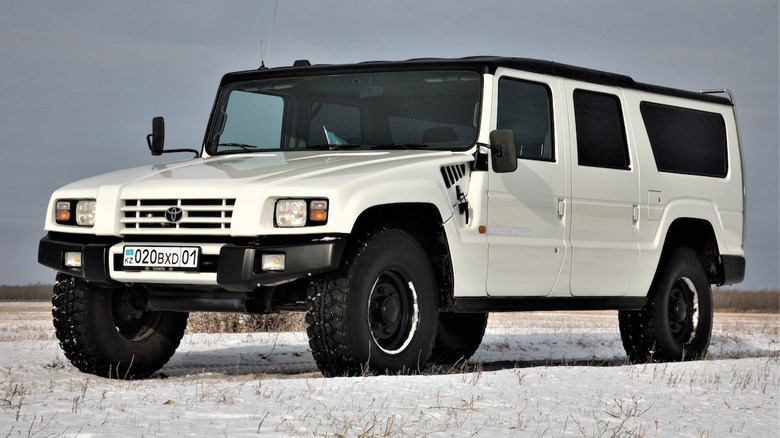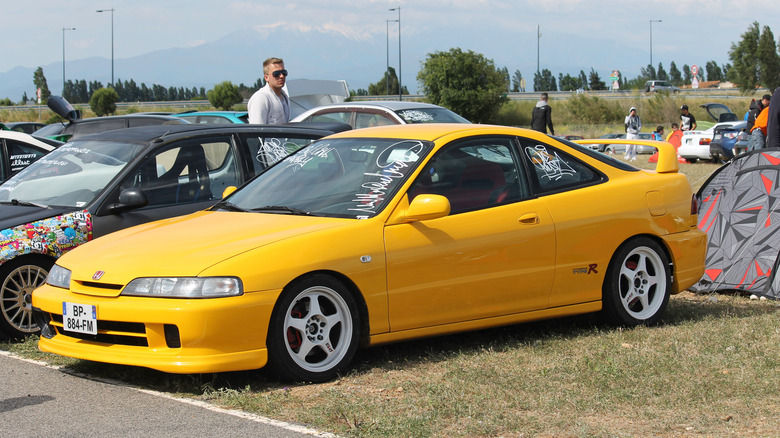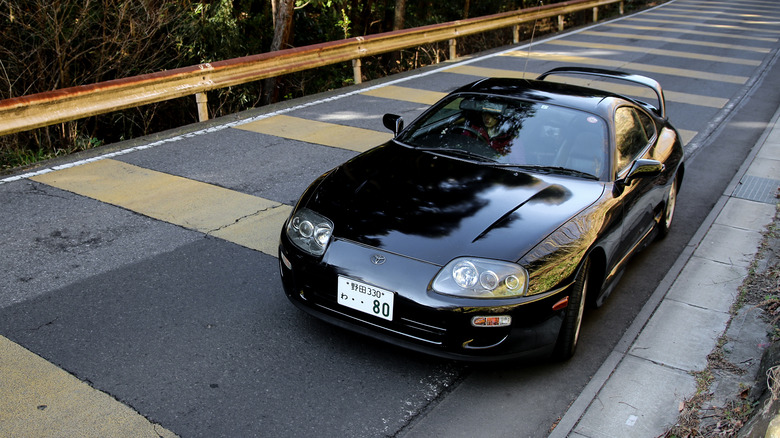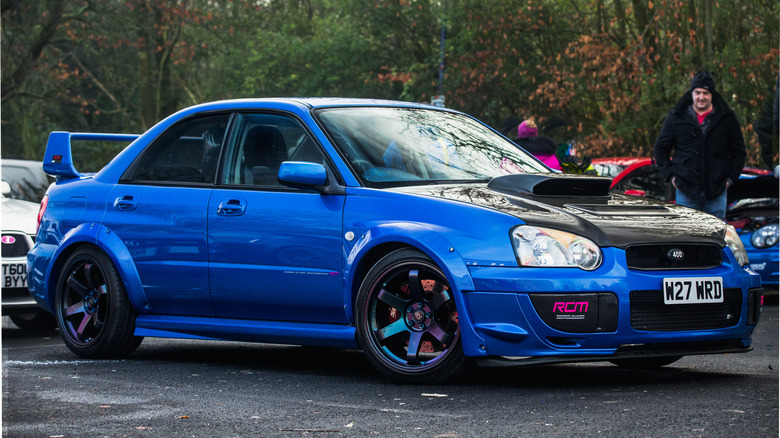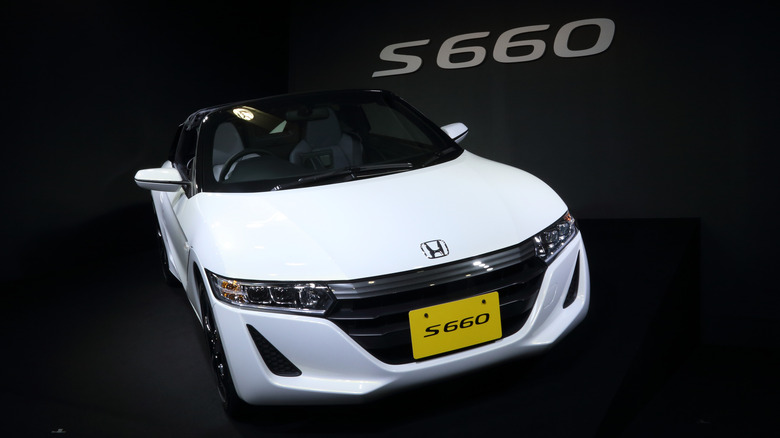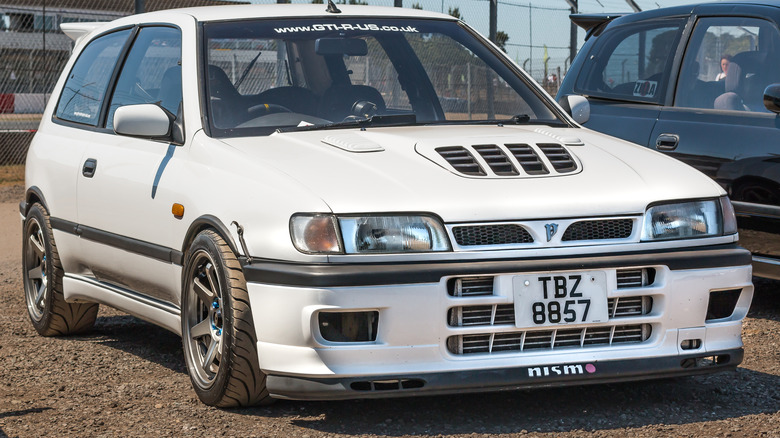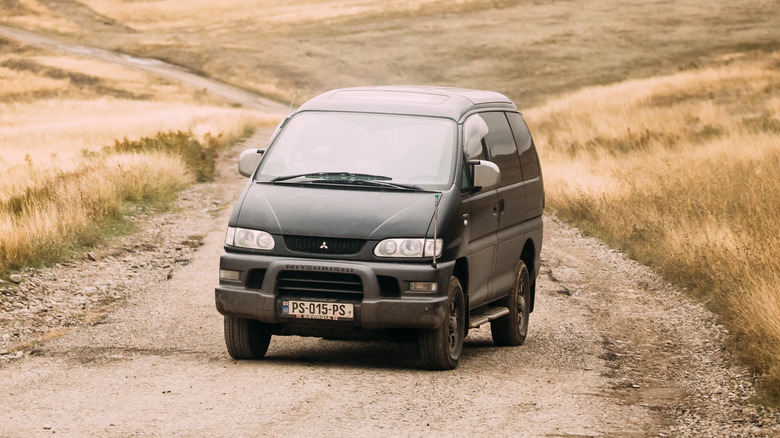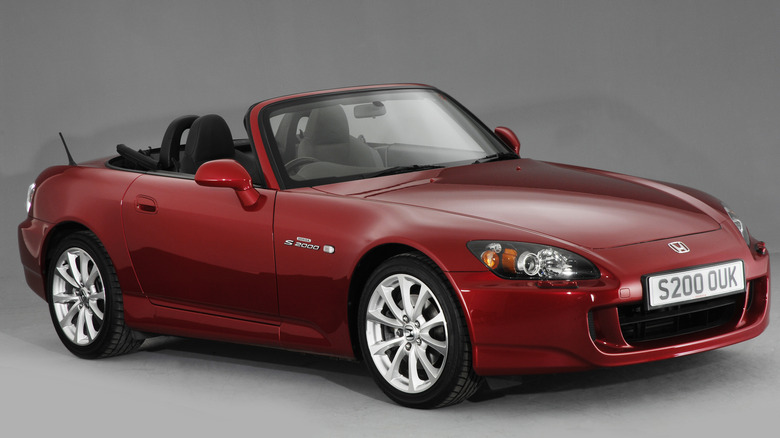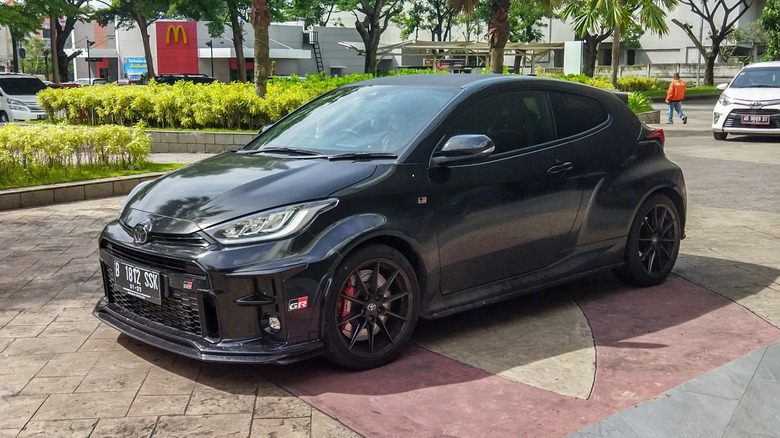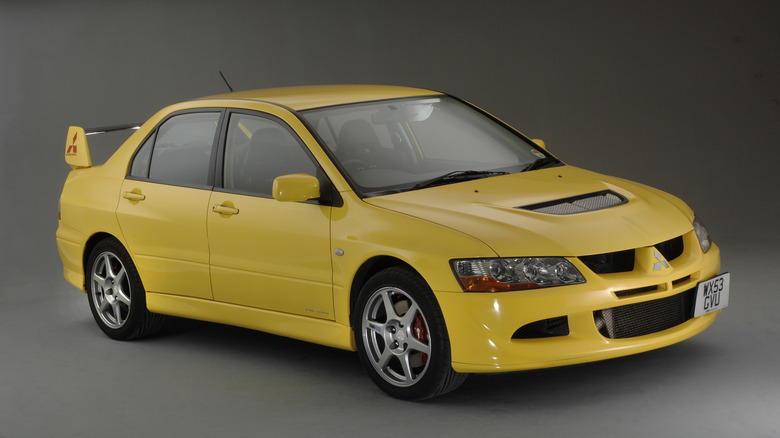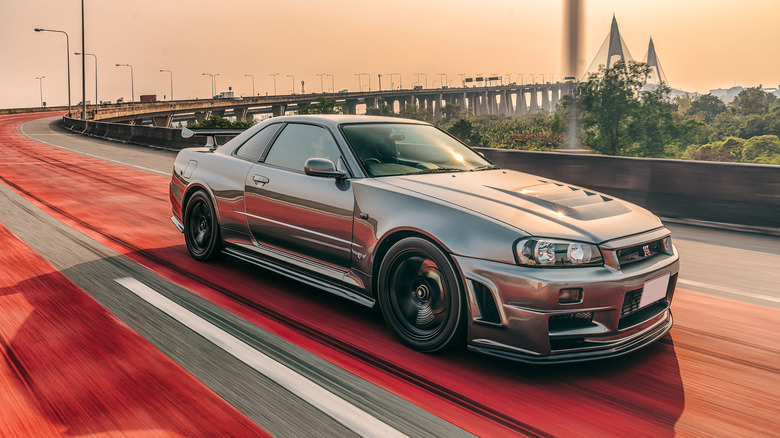16 JDM Cars You Really Need To Get Behind The Wheel Of
The term JDM, short for Japanese Domestic Market, can cover any car that was made to be sold in Japan. Over the decades, JDM cars have developed a reputation as being some of the best drivers' cars on the market, and for good reason. In recent years, values for the most desirable models have shot up, turning what was once attainable enthusiasts' favorites into collector's grails that only millionaires can afford. Sometimes, JDM cars are stereotyped as being primarily for drifting or tuning, and while plenty of tuner's favorites come from Japan, it's far from the only thing that Japanese manufacturers excel at.
From world-class off-road vehicles to limousines made for royalty, the JDM car world is one of great variety, although many of the country's hidden gems remain relatively unknown outside their home territory. With the 25-year import rule now allowing some of the best JDM cars from the '90s to be imported into America for the first time, it's likely that a new wave of Japanese cars will be gracing US shores soon. With that in mind, anyone wanting to experience the full breadth of driving experiences that JDM cars can offer should certainly try to get behind the wheel of these sixteen cars, which hail from all corners of the Japanese Domestic Market.
Honda NSX
The first generation of the Honda NSX, or Acura NSX as it was known in the US, was never the most popular performance car of its era, but it was more influential than many people might think. The designer of the McLaren F1, Gordon Murray, took heavy inspiration from the NSX, saying in an interview that the moment he drove the Honda, all other benchmark cars "vanished from [his] mind." The ride quality and handling of the F1 were therefore benchmarked against the NSX, a strategy that no doubt helped McLaren gain a reputation as one of the best drivers' cars of all time.
The NSX was also a technological triumph, with cutting-edge features including an all-aluminum monocoque chassis, titanium connecting rods, and forged pistons. Its high asking price limited its overall appeal, but it was still relatively commercially successful, with over 18,000 units sold globally. At one point, the NSX's low resale price on the used market made it a performance bargain, but by the second half of the 2010s, prices were rising rapidly, and have remained high today. In fact, Bloomberg reports, that the value of the NSX was rising so rapidly between 2013 and 2018 that it outperformed the Dow Jones stock market index.
Nissan GTR (R35)
The R35 Nissan GTR has now been on sale for around a decade and a half, and in that time, Nissan has made very few substantial changes to the car. But, even the most recent model year car remains a brutally quick performance machine, able to keep up with new supercars that cost twice its asking price. The combination of a 565 horsepower twin-turbo V6 and an all-wheel-drive system that provides grip in all conditions has kept the GTR at the top of the performance car game ever since BlackBerry phones were in vogue.
The GTR is a far cry from the luxury super-SUVs that dominate sales charts at the moment, as it's deliberately a bit rough-edged, with limited practicality and a dreary cabin that lacks the style of its rivals. It's not as easy to live with every day as a Porsche 911, Top Gear says, but the competition from this Japanese upstart undoubtedly forced Porsche to make the 911 a better car. Used examples of the GTR can now be found for as little as $50,000 on auction sites, not what most people would call a bargain, but still an excellent deal for the amount of sheer power that drivers get access to.
Toyota Century
The Century is the most expensive model that Toyota makes, but it's almost unheard of outside of Japan. The car debuted in 1967 and since then has seen just three generations, with each generation being in production for decades before being replaced. The latest generation of the car debuted in 2018, and it's lost none of its unique charm. Every small detail in the Century is considered, even down to the car's Phoenix emblem, which is engraved by a single craftsman over a period of six weeks. The car starts at the equivalent of $180,000 USD, and it's often referred to as the "Japanese Rolls-Royce," thanks to its ultra-luxury interior and exquisite attention to detail.
Production of the car is limited to 50 examples per month, and its customers are mostly high-level businessmen, politicians, or the elite. The Century is also the car of choice for Japan's Imperial Family, with Emperor Naruhito ordering a custom drop-top version for his coronation ceremony. The car is designed for its owner to be driven in, rather than to drive themselves, but getting behind the wheel is an equally unique experience, especially in Japan. Top Gear magazine took the car for a drive around Tokyo and its surrounding areas and reported that they were treated like royalty. The car drew attention everywhere it went, with locals stopping to respectfully take a look, and even the Army waving the TG team straight through a roadblock while stopping everyone else.
Nissan 300ZX (Z32)
When it debuted, the 1990 Nissan 300ZX was hailed as a return to form for Nissan's Z cars after the disappointing previous generation Z31, which was labeled a flabby disco-poseur's car by Car and Driver. The Z32 however, was quite the opposite, flipping the script to become "one of the most alluring cars to appear on the United States market in years," according to the magazine. The Z32 debuted with a number of improvements over its predecessor: for starters, its styling was radically changed, with a new, streamlined design that replaced the boxy, dated shape of the Z31. Its interior was also overhauled, with a modern cabin that replaced the tacky, dated interior of the previous-gen car.
It was a commercial success in its first few years, selling close to 40,000 units in the US in 1996, but towards the end of its lifecycle, it declined in popularity, with only 4,000 units sold in its last model year. Prices for used examples quickly dropped after production ended, and they've remained relatively low even today, although sales charts do show a general upward trend in line with the rest of the market. Still, the 300ZX remains a great affordable enthusiasts car for now, and it's well worth getting behind the wheel of one before used inventory dries up and prices begin to increase further.
Mazda RX-7 F3DS
Mazda is famous for its rotary engines, and if there's one car that has come to define the rotary-engined sports car, it's the RX-7. The RX-7 is the best-selling rotary car of all time by a considerable margin, with over 800,000 examples produced between 1978 and 2002. The FD generation holds the distinction of being the ultimate iteration of the nameplate, and it's both a tuner's favorite and an increasingly expensive collector's car in stock form. The car features an innovative twin-turbocharged rotary engine, and its high build quality meant that tuners could easily extract double its 250-odd horsepower with minimal modification.
Apart from being a very impressive car from a technological standpoint, the RX-7's appearances in the Fast and Furious movie franchise and high-profile video games like the Gran Turismo series have cemented its place as a pop culture icon. This, combined with the fact that high maintenance costs sent many RX-7s to the scrapheap years ago, has meant that prices for used examples keep rising every year.
Toyota Mega Cruiser
It remains relatively unknown in the US, but the Toyota Mega Cruiser is Japan's answer to the Humvee. It was developed at the request of the Japanese military as an all-terrain SUV. Unveiled at the 1993 Tokyo Motor Show, Toyota's Mega Cruiser military vehicle was used by emergency rescue teams and as an ambulance in remote, hard-to-reach areas. But, from 1996, the public could also buy their own Mega Cruiser, provided they could cough up the equivalent of roughly $185,000 in today's money.
The truck could seat six people and carry up to 750 kg (1,653 lb) of cargo, according to Toyota Magazine. It was powered by a 4.1L four-cylinder turbo-diesel and came with permanent all-wheel drive and Torsen limited-slip differentials. Most examples were sold in Japan, but a few are known to have been sold in other Asian markets like Russia and Kazakhstan. In 2021, two Mega Cruisers made their way over to American shores and were offered for sale for $120,000 each.
Honda Integra Type-R DC2
The Honda Integra Type-R DC2 was an instant hit with drivers when it debuted in the late Nineties, and remains a highly collectible car today. British magazine Evo proclaimed it to be the best-handling front-wheel drive car ever made in a 2006 article, and some would argue that claim remains true to this day. The driving appeal of the DC2 comes from its light curb weight and lack of invasive assistance features, plus its balanced setup, which encourages its driver to test its limits around corners. With a 1.8L engine that produces just 187 horsepower, the car isn't the fastest way to get about, but by all accounts, it's one of the most enjoyable.
The car was available with a very limited range of options: for example, just three color choices were available, white, red, or black. Most of its interior was carried over from the standard Integra, which meant plenty of gray-ish hard plastics and very little in the way of unique cabin design. The biggest difference were the red bucket seats, which did a great job of keeping the driver firmly in place, even if they look dated today. Still, the point of the Type-R isn't to focus on the inside, it's to focus on the road, and for the price, very few cars can match the Integra when it comes to sheer driver enjoyment.
Toyota Supra MkIV
The fourth-generation Toyota Supra is one of the most highly-regarded performance cars of its era, with Road and Track reporting that, from the factory, it could out-corner an Acura NSX and outrun a Corvette ZR-1. In the years since its release in 1993, the Supra has established itself as a veritable automotive icon, with prices skyrocketing accordingly. A pristine example of the car will set buyers back over a quarter of a million dollars today. Part of its mainstream appeal has been thanks to its appearance in the Fast and Furious movie franchise, but there are plenty of collectors who simply appreciate its performance capabilities alone.
Those performance capabilities extend to more than its stock form, as thanks to its bulletproof build quality and extensive aftermarket, the Supra is capable of producing multiple times more power than its factory output. Top-spec tuned road-legal models can produce upwards of 1,200 horsepower, and track-only drag racing examples have been known to produce significantly more.
Subaru Impreza WRX STI
The Subaru Impreza is one of the most recognizable cars linked to the golden era of rallying, and the 2004-2007 Impreza WRX STI is considered one of the best iterations. A number of mechanical upgrades over its predecessor made it more of an even match for the Mitsubishi Evo Lancer of the era, re-igniting the fabled fight between the two Japanese brands. The WRX STI packed a 2.0L four-cylinder boxer engine that made 265 horsepower, or 305 horsepower in top-spec ProDrive pack form. ProDrive might not be a name familiar to everyone, but they are a specialist engineering outfit responsible for Colin McRae's World Rally Championship-winning Impreza 555 car, so they have plenty of experience in making lightning-fast Subarus.
The ProDrive version of the WRX STI is considered the best of the best, but it's worth noting that it's not technically a JDM car, as it was made primarily for the UK market. However, even in 'regular' JDM form, the blobeye WRX STI is a very desirable collectors car. Prices have been consistently on the rise for years now, and show no sign of stopping. Since the WRX STI is no longer in production at all, finding a used example is now the only way to get behind the wheel of one.
Honda S660
A tiny sports car with a 660cc engine, the Honda S660 fits Japan's kei car regulations, which means it churns out just 63 horsepower. But, its diminutive footprint means it weighs just 1,830 pounds, which combined with the three-cylinder engine's redline of 7,800 rpm, makes for a surprisingly fun little sports car. A short-shift transmission and Honda's 'Agile Handling Assist' technology make the S660 great fun to throw into corners, and even when hitting a turn at 60 mph, Auto Express reports, the car's rear end remains firmly planted to the asphalt.
It's fair to say that the car wouldn't be as much fun in the US, where open highways and sprawling intersections are the norm, instead of the tight city streets and winding roads of Japan. But, anyone who has a chance to drive the S660 in its home territory definitely should, as the car offers a driving experience that's unlike anything on the market Stateside. Not to mention, the car draws attention wherever it goes thanks to its unique appearance, with one reviewer reporting that it drew attention away from a Ferrari 599 GTO and a McLaren at a car meet.
Nissan Pulsar GTI-R
The Pulsar GTI-R might not be as well-known as the Skyline GTR R32 from the same era, but it was fast enough to earn the nickname, "Baby Godzilla." The car was developed as a homologation requirement for Nissan to enter Group A of the World Rally Championship, and regulations dictated that 5,000 examples needed to be built. All 5,000 examples were sold across Japan and Europe, but they're now old enough to be imported Stateside under the 25-year import rule.
The car was fitted with a 227 horsepower, 2.0L, turbocharged four-cylinder engine, which was mated to an all-wheel drive system derived from the competition rally car. The car reportedly topped out at 144 mph and could accelerate from 0-60 mph in 5.5 seconds, no small feat for a hot hatch from the era. Used prices for the GTI-R have remained affordable, with US-imported cars available for between $16,000 and $20,000, according to MotorBiscuit. For anyone looking for a fun, rally-spec Nineties JDM that isn't an Impreza or a Lancer, the Pulsar GTI-R ticks all the right boxes.
Mitsubishi Delica
The Delica is a humble JDM van that, thanks to its all-wheel drive capabilities, is fast becoming a cult classic overlanding vehicle. The car has been described as the lovechild of a Mitsubishi Pajero and a common van, with SUV-like off-road abilities but enough room inside to be converted into a campervan with ease. According to Overland Way, the Delica was only ever officially sold in Japan, but it has remained a very popular import in markets including the UK, Australia and Canada. They are also now old enough to be imported Stateside.
To get the best out of this off-road minivan, it's a good idea to modify it, and most owners choose a similar list of modifications. Bigger, beefier tires, upgraded axles and a lift kit are all part of the stereotypical overlanding Delica checklist, but once they're fitted, the result is a van that's capable of driving over almost any terrain. It might not look like the vehicle that many people imagine when they hear the term "JDM," but the Delica is a brilliant piece of Japanese engineering that's definitely deserving of its global cult status.
Honda S2000
A high-revving roadster with excellent handling and timeless looks, the Honda S2000 is one of the best affordable sports cars on the market at the moment. It features a naturally-aspirated, four-cylinder engine that's best enjoyed in the upper reaches of its rev range. With 237 horsepower on tap, it will be easily beaten by most modern sports cars in a straight line, but the car really comes alive in the corners, with a well-balanced chassis and grip that remains predictable right up until its limit.
The car was in production from 2000 to 2009, when it was axed amid a general decline in the sports car market. Used prices for the car currently sit at around $30,000, but have been rising rapidly in the past year, with an average sale price increase of 7.3%. The experience of redlining the car's rev-happy engine makes it worth the price of admission alone, but if used prices keep going upwards at the rate that they currently are, the S2,000 might also make a solid investment over the next few years.
Toyota GR Yaris
A rally-bred pocket-rocket hot hatch with tech that comes straight from Toyota's Gazoo Racing division, the Toyota GR Yaris is the only production car to be based on a current-generation WRC car, and it remains a sell-out smash hit in every market it's offered in. The story behind the car begins with the WRC's aero regulations, as the Yaris was only offered in five-door production form, and rally regulations dictated that no aero devices could be fitted to the rear doors. So, in order to remain competitive, Toyota decided to develop an entirely new platform with three doors only, and from there, the GR Yaris was born.
The GR Yaris also differs from the regular Yaris in a number of other ways. According to HotCars, its roofline slopes lower for better aerodynamics, and its engine is hydraulically mounted on one side, to prevent unwanted vibrations throughout the car. It's powered by a 257 horsepower three-cylinder engine, which is capable of a 0-62 mph time of 5.5 seconds and a top speed of 143 mph. What really matters though, is that the car drives like a pure-bred rally car, with riotous handling on asphalt, gravel or mud. It's as close as any of us mere mortals will get to driving a real competition WRC machine. Unfortunately, it's not sold in the US, and it seems unlikely that it will be, so Americans might have to wait a full 25 years to get behind the wheel of this one.
Mitsubishi Lancer Evo VIII
The Mitsubishi Lancer Evolution VIII is one of the greatest iterations of an iconic JDM nameplate. It was a true supercar killer that took the form of a four-door family sedan, with a drive that was set up for racing more than it was for the road. In a memorable episode of Top Gear, Jeremy Clarkson drove the Evo VIII and was so impressed with it that he decided to pitch it against another AWD performance car, the Lamborghini Murcielago. A few laps around the TG test track with Clarkson in the Evo and professional race driver James Kaye in the Lambo proved that, on a tight track at least, the Mitsubishi was more than capable of keeping pace with the supercar.
Finding one in good condition is getting trickier and trickier, especially since the car is a favorite among modders and is often boosted by hundreds of horsepower over its stock output. Not only that, but Car and Driver reports that the car needed a strict breaking-in time of 600 miles, and if not looked after correctly during that period, the car will never be able to reach peak performance. As with many JDM models, prices for pristine examples are creeping up, and as the supply of stock Evo VIIIs dwindles, this will only increase exponentially. So, anyone who wanted to get behind the wheel of this most brutally fast of rally sedans will have to do so quickly.
Nissan Skyline R34 GTR
The Nissan Skyline R34 GTR really needs no further introduction to anyone with a basic knowledge of JDM cars, as its reputation as one of the greatest (and priciest) cars of its era now precedes it. The R34 was the fifth and last generation of the Skyline GTRs, as for the R35, the "Skyline" part of the name was dropped. Thanks to a gentleman's agreement between manufacturers, the GTR officially made 276 horsepower from the factory, but the real figure was likely more like 330 horsepower. Top Gear reports that the car's output could be easily increased to 400 horsepower with just a remap, and outputs of over 1,000 horsepower were possible with the right modifications.
The car sits on the cusp between the analogue and digital eras of performance, as The Drive reports that although it comes with a number of on-board computers, its lack of electronic assists ages it today. With its RB26DETT engine and huge tuning potential, the R34 GTR is a reminder of a different era of car culture, when Japanese cars dominated the performance world. It's far from the last great Japanese performance car, as recent arrivals like the Toyota GR Yaris will attest to. But, it's the last one that feels squarely out of the Fast and Furious and Gran Turismo era, a time that many fans hold dear as the defining period for modern JDM car culture.
